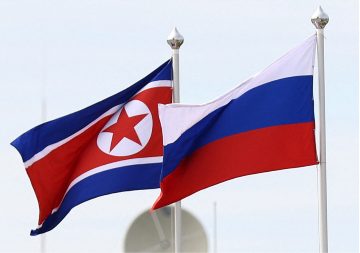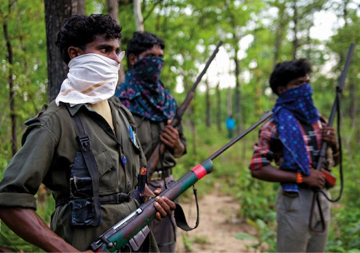Located between France and Spain in southwestern Europe is a place called Andorra; 468 kilometres in all, 2.5 times the size of Washington DC with a population of 69,150, predominantly Roman Catholics, 43 per cent of whom are Spanish and rest either Andorrans, French or Portuguese. The unique aspect of Andorra is that it has two parent states-France and the Bishop of Seo de Urgel, Spain. Created in 1272 under an agreement between the Bishop and the French count of Foix, Andorra today is ruled by representatives of the French President and of the Bishop. It is not exactly a nation-state; it is a principality.
There is a reason why I spent time one afternoon to find out what and where Andorra is. It is fast becoming a catchword in Kashmir and Washington and wherever there are analysts and experts who are uniquely equipped to find and suggest solutions for everything under the sun. The All-Party Hurriyat Conference, which still continues to imagine itself as the true representative of the people of Kashmir, is busy drumming up support for a proposal called the Andorra Proposal. The proposal, in short, is this: Make Kashmir another Andorra. Give Kashmir the status of an independent principality with foreign policy, defence and budgetary support shared equally by India and Pakistan.
Before examining the proposal point by point, it would be an enlightening exercise to understand the origin and the incubators of this idea called the Andorra Proposal, and why it has considerable support in Washington. In July 1996, a Kashmiri businessman settled in the United States, Farooq Kathwari (CEO, President of Ethan Allan, $ 679-million manufacturer and retailer of furniture, with 316 stores and 21 plants, headquartered in Danbury, Conn.) roped in Congressman Gary Ackerman, Senator Robert Toricelli, Dr Joseph Swatzberg of the University of Minnesota and Dr Robert Wirsing of the University of South Carolina to form the Kashmir Study Group.
Before migrating to the US and claiming political asylum, Kathwari led street protests in Srinagar and elsewhere in Kashmir and, significantly, helped visiting journalists from the US to cover the conflict in Kashmir. This connection helped him to secure asylum in America and buy out an ailing furnishing firm. He is today an influential person in Washington and actively lobbies support for his cause. He was invited by the State Department in April 2001 to represent the Kashmiri people at an off-the-record, no-media, conference on Kashmir which was attended by the who's who of the US strategic community and a lone Indian participant, Prof Amitabh Mattoo, currently Vice-Chancellor, Jammu University.
Democrat Senator Robert Toricelli has a more colourful past. This New Jersey Senator was investigated by the Federal Bureau of Investigation for accepting contributions from a member of the Chinese organised crime, David Chang. Chang had pleaded guilty to $ 53,700 in illegal donations to Torricelli's 1996 Senate campaign and alleged that the Senator accepted gifts such as Italian suits and a $ 8,100 Rolex watch, in return for intervening in Chang's business deals in North and South Korea. The US Justice Department, however, dropped charges after a year- long investigation.
The proposal, called the Living-stone Proposal, titled 'Kashmir: A Way Forward' (accessed at www.kashmirgroup.com/) begins with a white lie. It states that the Kashmir Study Group, in consultation with several Indians and Pakistanis, had prepared the proposal. What is missing, however, are the names of the Indians the Group consulted. The two-page list of members involved in preparing the report has no Indian names. Another significant thing is the date on which the Group published the final version of the report-September 1999. This was barely two months after India had successfully countered Pakistani aggression in Kashmir.
If these are minor points, let us look at the fundamental premise on which the entire proposal is constructed. It calls for a division of Kashmir into two or three separate or homogenous entities, either independent of each other or their parent states or existing in splendid isolation between India and Pakistan.
More preposterous is the underlining philosophy of this suggestion. Such a step would certainly have to be executed with the help of a mediator which, by default, is the US. Why by default? The United Nations no longer commands the same respect and acceptability as the US could extract from all the parties concerned. Besides, if the UN were to intervene, it would have to begin from the UN Resolutions of 1947-1948 and that could mean involving other nations, which have other options and opinions on Kashmir.
The entire proposal, if one were to look at it from a distance, is a prop to invite Washington to sit and decide the future of Srinagar (which in simpler terms means the Americans' future strategic posturing in South Asia). Washington has no interest in the people of the State. Kashmir, for the policy heads in Washington, is merely the bridge to Southeast Asia, a missing link so far in the geostrategic vision of encircling the globe from Japan to Jakarta.
One clear pointer is the missing reference to terrorist groups. Nowhere has the report mentioned the role of terrorist groups that either work independently or in collusion with Islamabad. This is a serious flaw and a well-thought-out one. Mentioning terrorists would complicate the situation for the Americans. First, it would mean an acknowledgement of the presence of terrorist groups in Kashmir. This in turn would mean including Kashmir in Washington's 'war against terrorism', which would upset General Pervez Musharraf's Pakistan no end as well as many of the heads that have come together to think up the Andorra Proposal.
Any mention of terrorism in Pakistan would also mean tying the State Department up in knots over its continuing public appreciation of the General in Islamabad. So the report is dead silent on terrorists and therein lies the single most important reason why it is tailored to suit certain policies in Washington.
Among the suggestions is one that calls for the creation of a "secular, democratic Constitution". The formula of slicing up Kashmir is primarily based on the religious demographic pattern. The Kashmir Valley, predominantly Muslim, is the one part that the proposal deems to be an Asian Andorra. Much like the European principality, the new Kashmir would only have Muslims. The proposal, in other words, is suggesting another Partition.
Another suggestion which merits more than a cursory explanation is in the form of a lone sentence. This talks about the right of the Kashmiri Pandits to return to their homes. The proposal does not have any suggestion (it is otherwise full of practical solutions to every conceivable problem) to ensure that the Pandits, who were forced to flee from the Valley fearing death and retribution at the hands of terrorists, return to the Valley and their property and means of living are restored. Yet, without such guarantees, there could not be enduring peace in Kashmir.
The physical division of a socio-political entity is not as simple as cutting a cake-that is, however, what the Livingstone Proposal expects to do. A socio-political entity is about people, their culture and history. In any case, the report fails to define Kashmir. Is it only the Muslim-dominated Valley, as the report suggests? The Washington crowd, flying in and out of New Delhi with alarming regularity, should first put their heads together to first understand what Kashmir is before suggesting solutions to its problems-solutions which border on fantasy.
* Views expressed in this article are those of the author and do not necessarily reflect those of the Observer Research Foundation.
The views expressed above belong to the author(s). ORF research and analyses now available on Telegram! Click here to access our curated content — blogs, longforms and interviews.




 PREV
PREV

